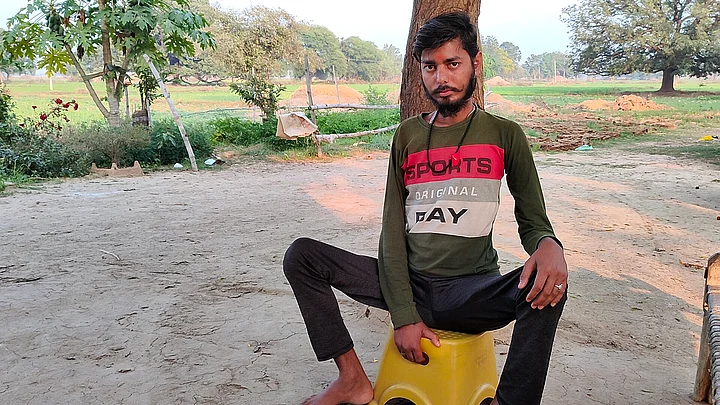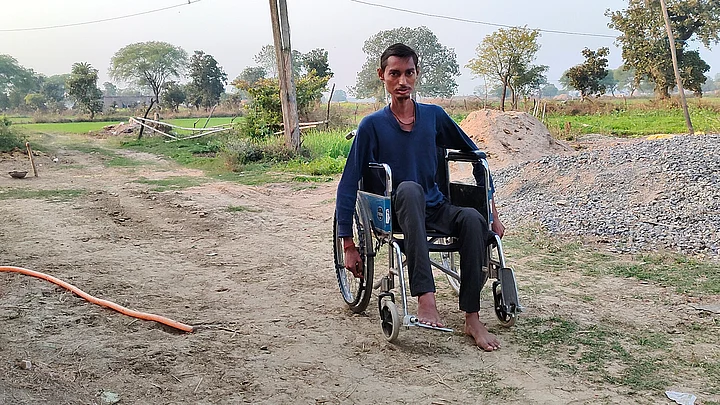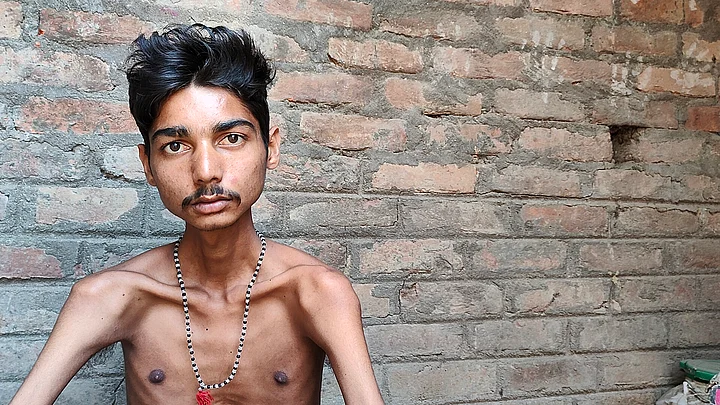Video Editor: Sandeep Suman
Twenty three-year-old Manish and his three other siblings, Manoj, Susheela, and Aneesh, had a normal childhood growing up in Madhya Pradesh's Rewa district.
But, as they turned older, around the age of 7-9, they developed a rare form of muscular dystrophy – a genetic disorder which causes progressive muscle loss and weakness. This changed their lives drastically, and permanently.
"It wasn’t always like this. We were all healthy when we were young. But as we grew up, our bodies started to shrink. It was as if our bodies were drying up.”Manish Kumar Yadav
The eldest sibling, Susheela, hasn't walked in 23 years. "The earliest symptoms were weakness and fatigue, but with time, we started losing all our bodily energy. It was like something was slowly sucking out all the power from our bodies," she said, recalling the agony of growing up with the disease.
“When my sister Susheela became bedridden, we were very sad. By then, the disease had started showing symptoms in all of us, but we never thought that we would have to quit school. As time passed, we couldn’t walk anymore. My backbone had started to bend inwards and my head tilted upwards, making it impossible to look on the road or to walk straight. I could no longer go to school and had to quit my studies,” Manish said.
But it was their father, Ram Naresh Yadav, who had developed the disorder first.
'Difficult For a Mother to See Her Children Suffer'
Premvati was a child bride. When she was married off to Ram Naresh, he was healthy. But by the time she started living with her husband, he had developed symptoms of the rare disease.
“We were married off in our early teenage years. He was fine at that time, but after I came of age and started living with my husband, he started showing some symptoms. He would get tired even if he walked a little. It took years for the disease to show its full strength. He has now been bedridden for over two decades.”Premvati
“Muscular dystrophy is a genetic disorder, transferred from the parent to the offspring," Dr Manish Sinha, a neurologist in Kailash Hospital, Noida, explained.
The incidence rate of the rare disease is one out of 4,000 children. "With progressive muscle loss, the body slowly loses its ability to function. However, there's no treatment," he said.
“When they were born, they were so beautiful and healthy. But as they grew up and crossed the age of 5, their hands and legs started getting thinner… almost like their bodies were drying up. There were no other symptoms... no fever, no pain. But they started to walk differently,” Susheela said, her eyes fixated on her son as he tried to get up from the cot.
The family of seven lives on three acres of land in Rewa district, Madhya Pradesh. Suresh, the oldest brother, is the only sibling who was spared by the disease and is healthy. He works as a farmer to feed the family.
“Once my brother fell down near his school. He was weak already. The teacher informed me, and I went to bring my brother back. After that, I told them to stop their studies and somehow survive. I know that education is important, and it can change lives, but what could we do?"Suresh
'Diagnosis Hasn't Been Easy'
Early on, there were symptoms, but nothing too painful. There were signs, but no clear diagnosis.
The family moved from one hospital to another, unable to find help. Finally, in October 2021, the family visited the All India Institute of Medical Science (AIIMS) in Delhi where they were told that they are suffering from a rare genetic disorder.
“Doctors said that it is a genetic problem. They told us that the diagnosis for this disease can't be done in India as there are no machines available. It could be tested in Germany or the UAE, as they have the machines and we could perhaps get a cure there. But we are struggling to even meet the daily expenses, how will we afford to get treatment in a foreign country?”Suresh
According to Dr Sinha, patients suffering from muscular dystrophy have a lifespan of 20-40 years because of various factors, including weakness, muscle loss leading to other problems, and diminishing immunity.
“Although there are no definitive treatments available, assistive treatments like physiotherapy, rehabilitation, and symptomatic treatment are the most viable options for these patients.”Dr Manish Sinha
Can't Afford Treatment
The family has had a hard time figuring out daily expenses and lack the resources to seek any medication for their disease, since none of the sick siblings are equipped to earn.
Suresh has no other choice but to continue to fend for the family, to feed them with whatever little income he can generate by farming.
"Our lives now revolve around them. They need our help throughout the day. I can't abandon them and go out to earn. The money will be useless if I can't be with when they need me. What if they fall down or start having other issues? Who will look after them?"Suresh
(At The Quint, we question everything. Play an active role in shaping our journalism by becoming a member today.)



